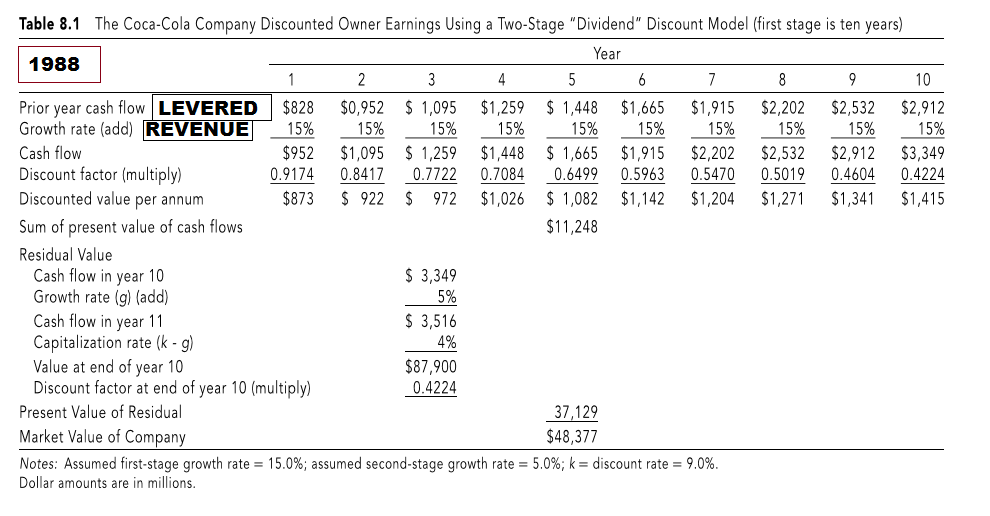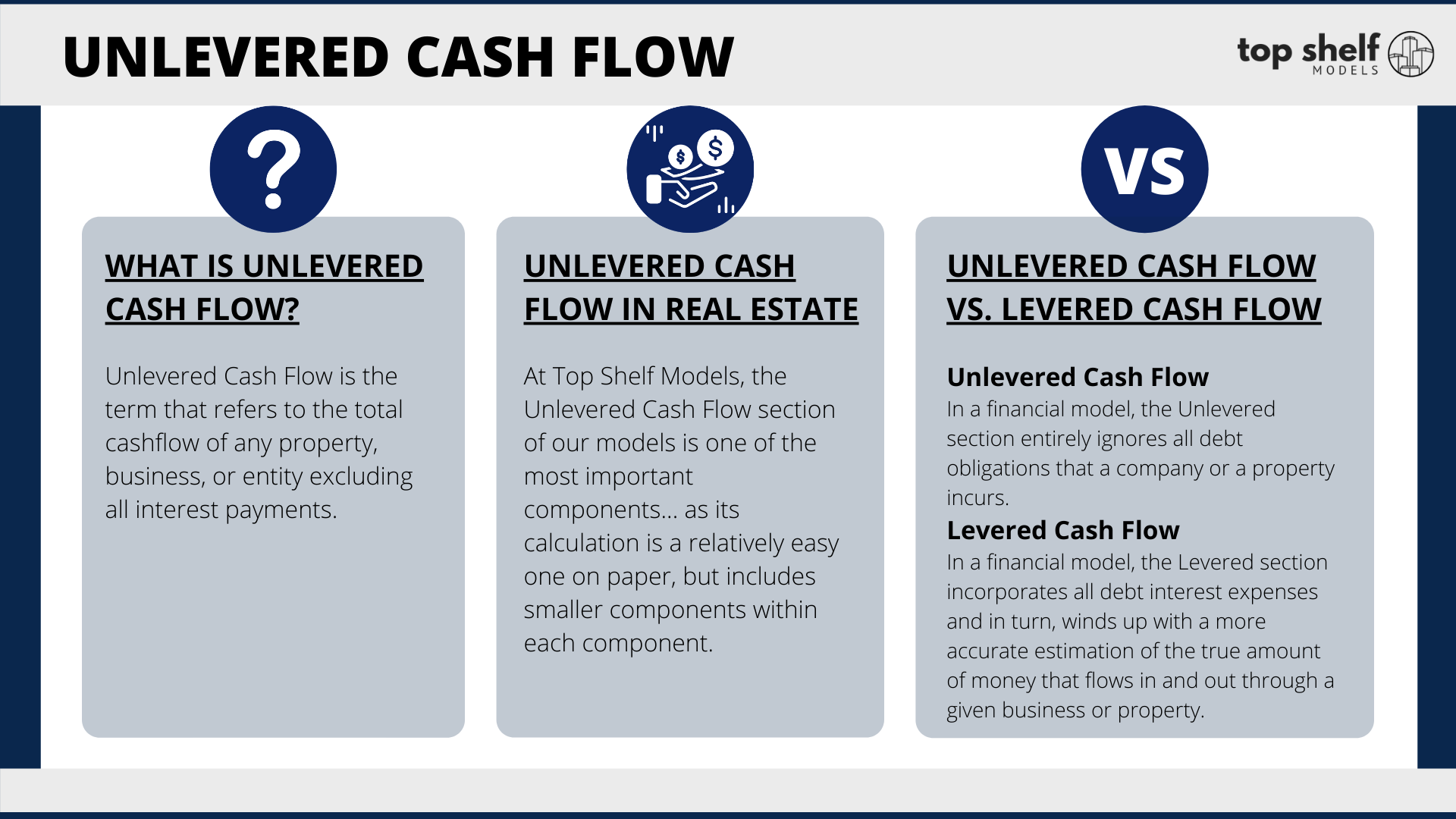

#LEVERED VS UNLEVERED CASH FLOW FORMULA FREE#
Therefore, if we start with EBITDA, we must deduct the impact of debt financing to remove the cash that belongs to lenders.Unlevered Free Cash Flow is the cash generated by a company before accounting for interest and taxes, i.e.

Unlike net income and CFO, EBITDA is capital-structure neutral. FCFE Calculation Example (EBITDA to FCFE) FCFE = $13 million – $3 million – $5 million = $5 millionģ.Then, we subtract the $3mm in Capex and $5mm in debt paydown to get $5mm once again. Cash from Operations (CFO) = $10 million + $5 million – $2 million = $13 million.In the 2nd example, we begin with cash from operations (CFO) of $13mm rather than net income.ĬFO is equal to the sum of net income and D&A, subtracted by an increase in NWC, i.e. That leaves us with $10mm, but then we must subtract the $5mm in debt paydown, which leaves us with $5mm as the FCFE.Ģ. Next, our D&A assumption of $5mm is added back since it is a non-cash expense, and then we subtract the $3mm in Capex and $2mm increase in NWC. Suppose a company’s net income is $10mm given a 10% net income margin assumption and $100mm in revenue. FCFE Calculation Example (Net Income to FCFE) The calculation of free cash flow to firm (FCFF) starts with NOPAT, which is a capital-structure-neutral metric.įor FCFE, however, we begin with net income, a metric that has already accounted for the interest expense and tax savings from any debt outstanding. The one notable exception is financial institutions since their main source of revenue is interest income – making it unfeasible to separate the unlevered FCF since the business model itself is oriented around financing (e.g., interest income, interest expense, provision for losses). However, in practice, the FCFF approach and unlevered DCF are used across most industries. Furthermore, the correct discount rate to use would be the cost of equity, as the cash flows and discount rate must match up in terms of the represented stakeholders. That said, the FCFE could be equivalent to the FCFF if there is zero debt in the capital structure.įCFEs can be projected in a levered discounted cash flow model (DCF) to derive the market value of equity. The clear pattern is that these actions benefit the equity holders.Ĭontrast this to interest expense or debt repayments, which solely benefit lenders. Re-Investments → The company could reinvest the cash into its operations, which in the ideal scenario would increase the share price.Stock Buyback → Buying back shares reduces the shares outstanding, which reduces dilution and can artificially boost the value per share.Dividend Issuance → Payout cash dividends directly to preferred and common shareholders.So, rather than representing the cash available to all capital providers, FCFE is the amount attributable to only equity investors.įor instance, the company could allocate the residual cash flow to fund the following corporate actions: Simply put, free cash flow to equity (FCFE) is a “levered” metric, so the value of the cash flows must include the impact of financing obligations.

The reason for this is that the effects of debt financing have been removed – namely, interest expense, the “tax shield” (i.e., savings from interest being tax-deductible), and principal debt repayments. Since free cash flow to equity (FCFE) represents the cash left over after meeting all financial obligations and re-investment needs to remain operating, such as capital expenditures (Capex) and net working capital, the metric is often used as a proxy for the amount that a company can return to its shareholders via dividends or share buybacks. FCFE, or “Free Cash Flow to Equity,” measures the amount of cash remaining for equity holders once operating expenses, re-investments, and financing-related outflows have been accounted for.


 0 kommentar(er)
0 kommentar(er)
